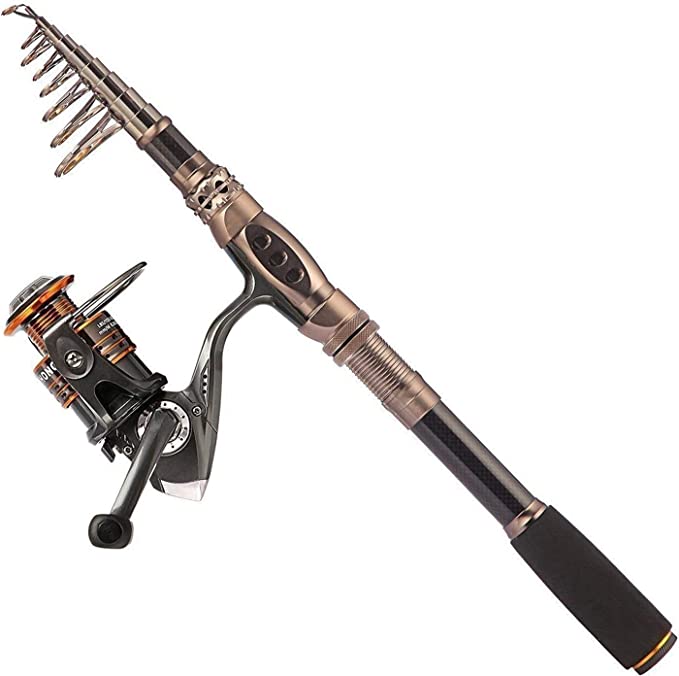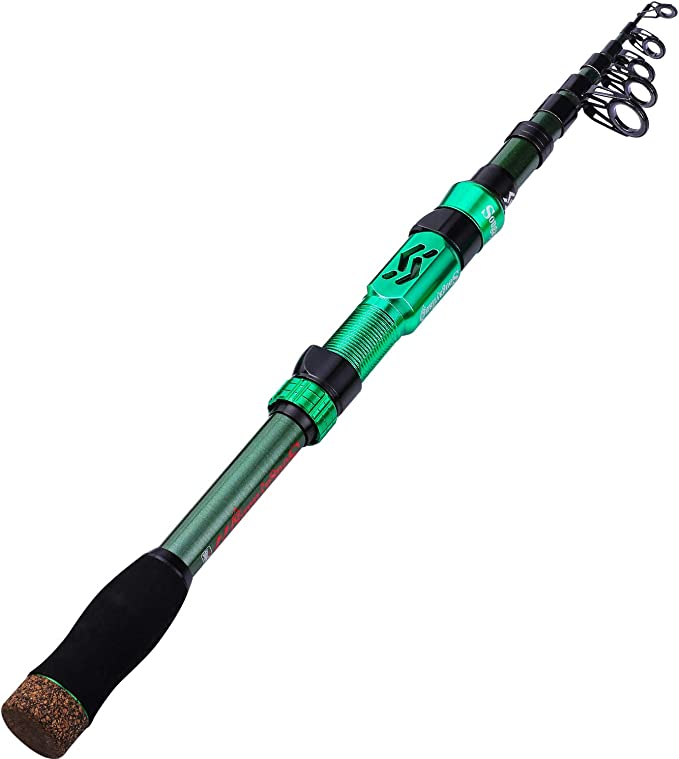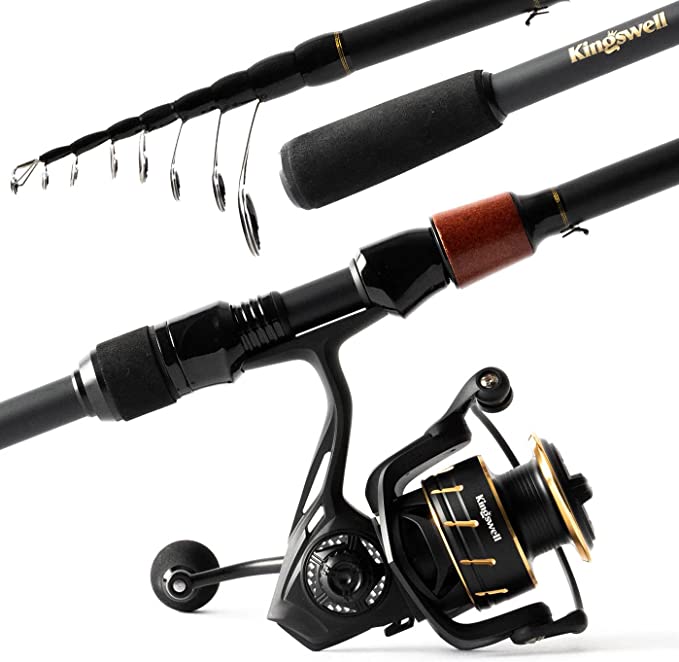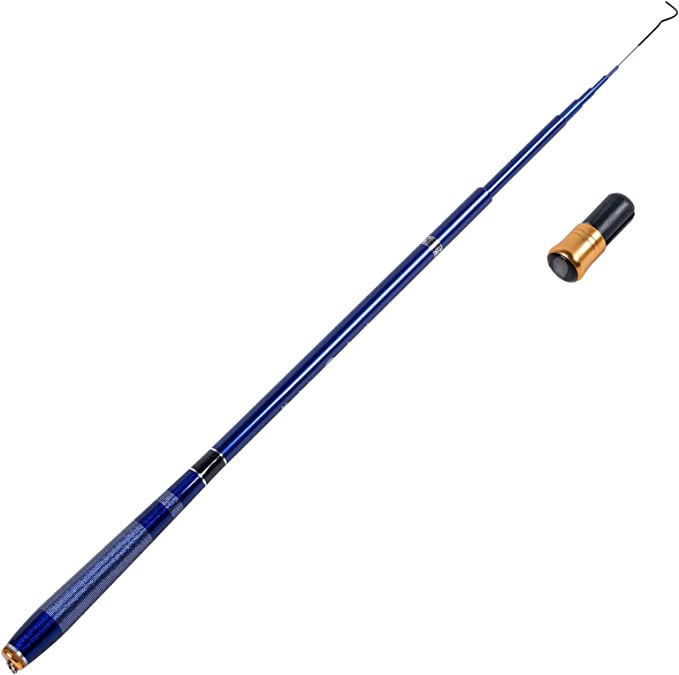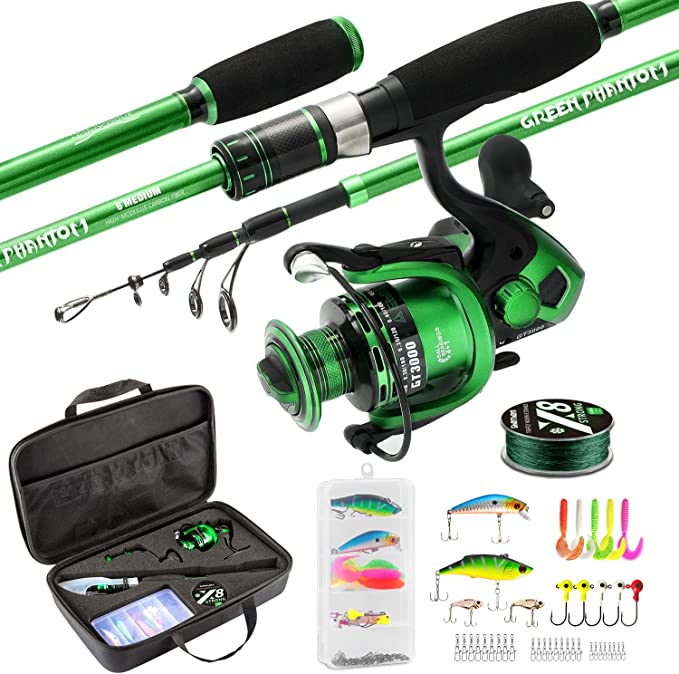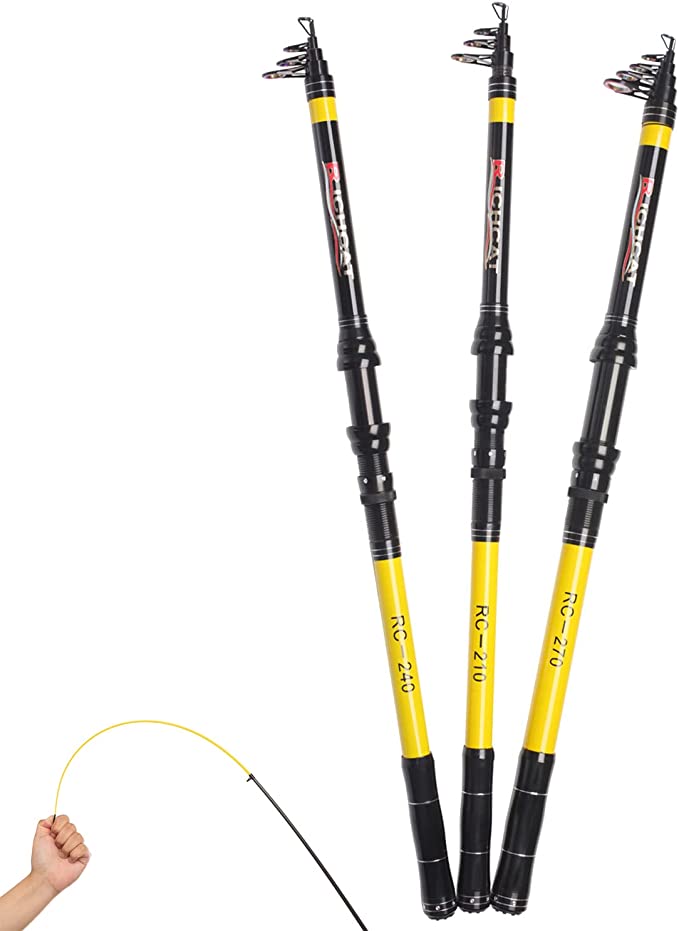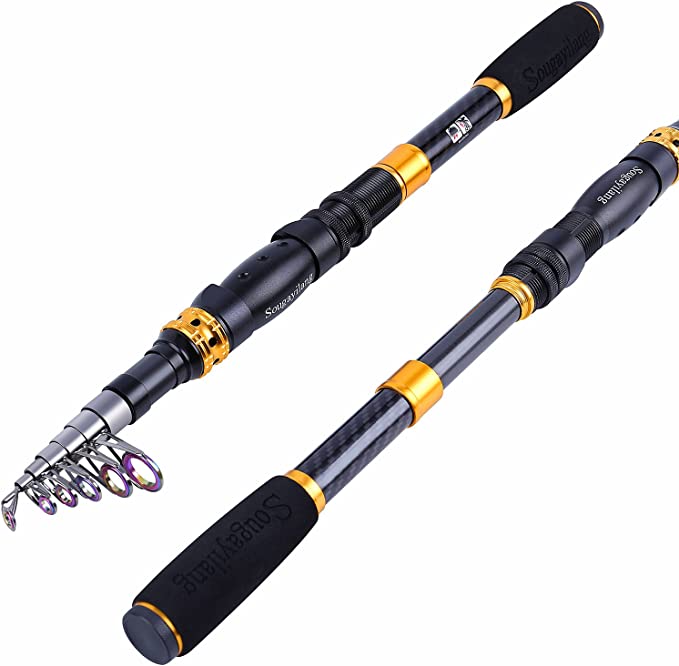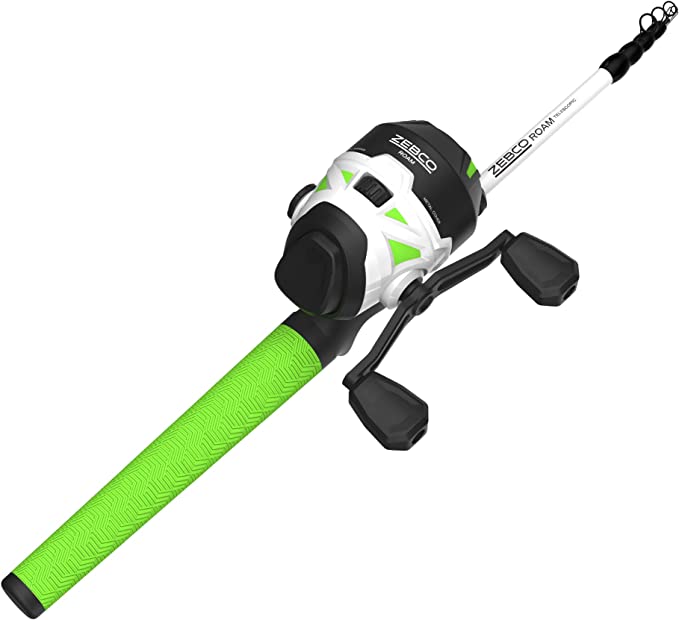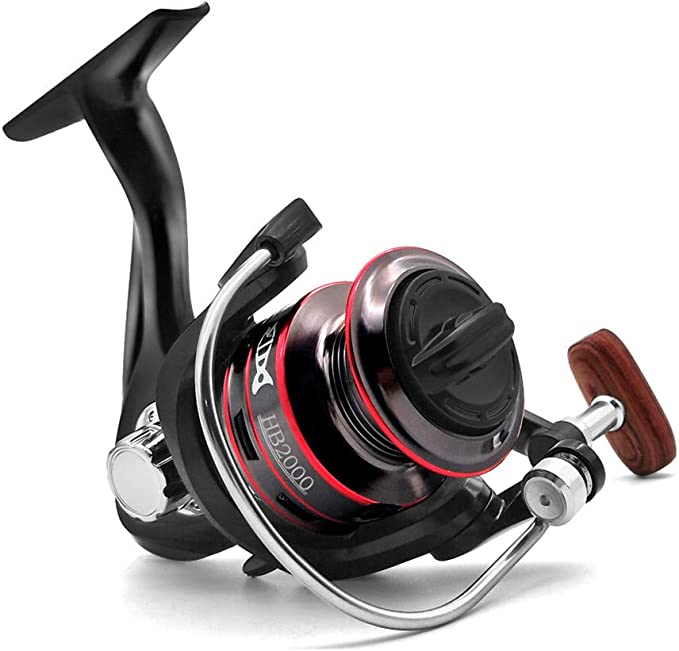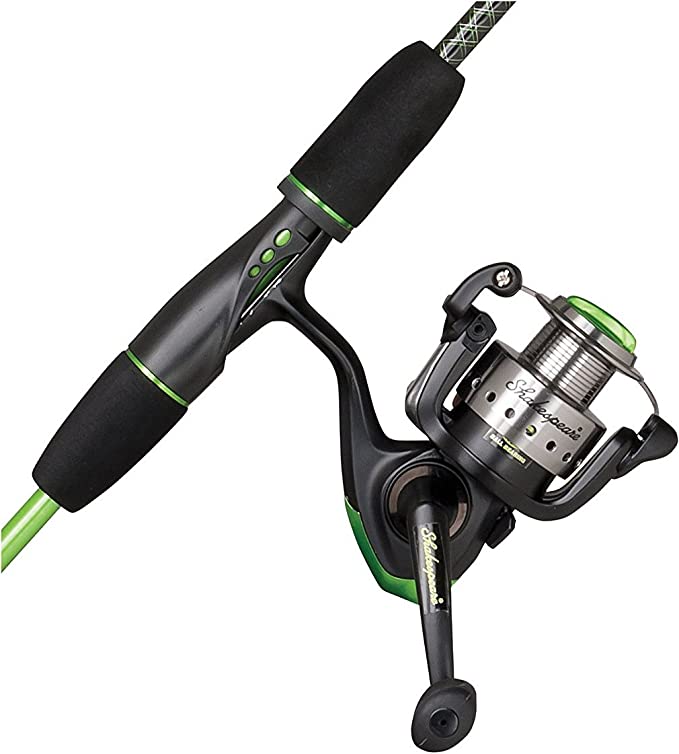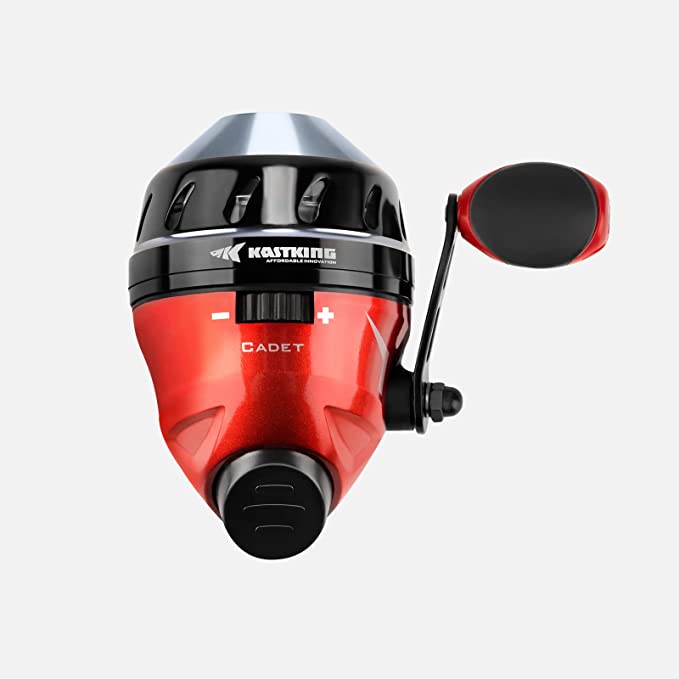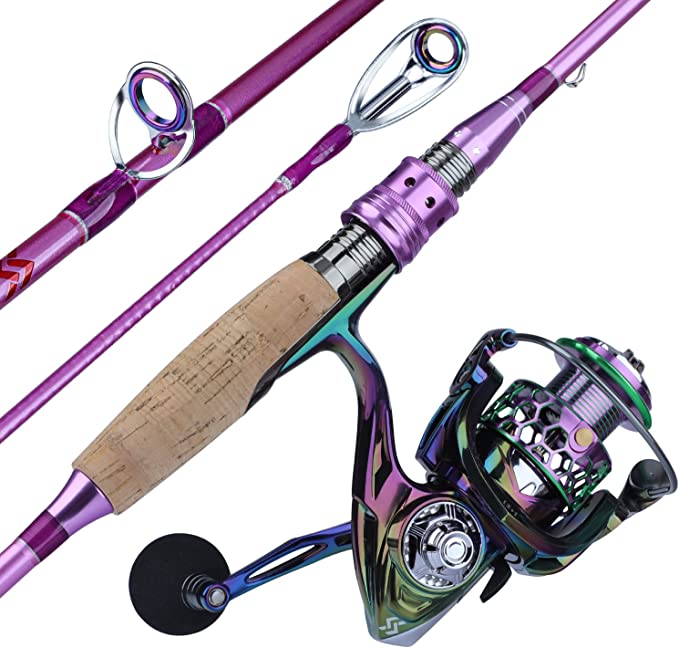The Unseen Engineering: How a Backpack-Sized Fishing Rod Works
Update on Aug. 1, 2025, 12:26 p.m.
The urge often strikes without warning. It’s a perfect Saturday morning, the air is crisp, and a distant lake, shimmering in the sun, calls your name. The impulse to pack a small lunch, grab a line, and spend a few hours by the water is a powerful, primal one. But then, reality sets in: the thought of wrestling a cumbersome, seven-foot, one-piece rod from the garage, untangling line, and finding that one specific lure in a cluttered tackle box can be enough to extinguish the spark of adventure. The moment passes, and the sofa reclaims its victory.
What if the barrier wasn’t the impulse, but the equipment? What if a fully functional fishing setup could be as easy to grab as a water bottle? This is the promise of portable gear like the Milerong Fishing Rod and Reel Combo. But beyond its convenience lies a fascinating story of material science and mechanical ingenuity. How, exactly, does a capable fishing rod collapse to the size of a small umbrella? The answer is a masterclass in modern, accessible engineering.
Deconstructing the Wand: The Science of the Telescopic Rod
The most striking feature of the combo is its carbon fiber rod, which extends from a travel-friendly 16.1 inches to a functional 6.89 feet. This isn’t magic; it’s a principle of nested sections, much like an old naval spyglass. Each hollow segment tapers slightly, allowing it to slide snugly into the next, held in place by friction when extended. The true marvel, however, is the material itself.
Carbon fiber is a composite material, born from the demanding worlds of aerospace and competitive racing, where maximum strength for minimum weight is paramount. It consists of microscopic carbon filaments woven into a fabric, which is then impregnated with a plastic resin and cured. The result is a material with an extraordinarily high stiffness-to-weight ratio. Compared to older fiberglass rods, a carbon fiber blank is significantly lighter, reducing fatigue during a long day of casting.
More importantly, its stiffness turns the rod into a highly efficient conductor of vibrations. Think of it as a superhighway for information. The faintest, most subtle nibble from a curious trout, a tremor that would be absorbed and lost in a more flexible material, is instead transmitted crisply up the line, through the rod, and into your hand. This is the essence of sensitivity, and it’s what allows an angler to react instantly, turning a potential bite into a successful catch.
This highway is paved with ceramic-lined guides—the small rings that direct the fishing line along the rod. Ceramic is incredibly hard and smooth, with a very low coefficient of friction. As the line flies out during a cast or is retrieved under tension, these guides minimize heat and wear, protecting the line from damage and allowing it to flow with minimal resistance for longer, more accurate casts.
The Engine in Your Hand: Understanding the Spinning Reel
Paired with this advanced rod is the mechanical heart of the system: the spinning reel. The spinning reel design is a beginner’s best friend primarily because its spool is fixed; the line uncoils from it freely, drastically reducing the chances of the dreaded “bird’s nest” tangle. But its performance is defined by a simple, yet crucial, number: the gear ratio, listed here as 5.2:1.
To understand this, think of the gears on a bicycle. A low gear is easy to pedal but doesn’t create much speed; a high gear is harder to push but covers more ground with each rotation. A reel’s gear ratio works the same way. The “5.2:1” means that for every single, complete turn of the handle, the bail—the arm that wraps the line—rotates around the spool 5.2 times.
This ratio is a deliberate engineering compromise. It’s fast enough to quickly pick up slack line and keep pressure on a fish, but it still provides enough torque (cranking power) to fight the bass and trout this combo is designed for. It’s the versatile, all-around “middle gear” of the fishing world, perfectly balancing the need for speed with the requirement for power.
The Genius of the System: Why a “Combo” Is More Than Just Parts
An expert angler might spend hours meticulously matching a specific rod with a specific reel, considering factors like weight, balance, and action. For a beginner, this process is daunting. The true genius of a well-designed combo is that this work has been done for you. This is an application of systems engineering, the principle that a collection of optimized, integrated parts will always outperform a random assortment of high-quality components.
The “Ultra Light” power of the Milerong rod is not an arbitrary label. It means the rod is designed to bend and load effectively with very light lures. It is perfectly matched with the RG 3000-size reel and is intended for lighter fishing line. Using a heavy reel on this rod would create a clumsy, top-heavy setup that is tiring to hold and difficult to cast accurately. The balance point would be off, and the synergy lost. By packaging these components together, the combo ensures a harmonious system where each part complements the others, providing a predictable and enjoyable experience right out of the box.
Conclusion: Engineering as the Great Enabler
In the end, the Milerong Fishing Rod and Reel Combo is more than just an assembly of carbon fiber and steel. It is a testament to how clever, thoughtful engineering can remove barriers and make the natural world more accessible. It’s a solution that acknowledges the constraints of modern life—limited storage space, a desire for spontaneity—and meets them with smart design.
By understanding the science woven into its very fibers and the mechanical principles turning within its core, we can appreciate it not just as a tool for catching fish, but as a small marvel of accessible technology. It’s a reminder that sometimes the most profound innovations aren’t the most complex, but those that gracefully empower us to say “yes” to that sudden, beautiful impulse to get outside.
